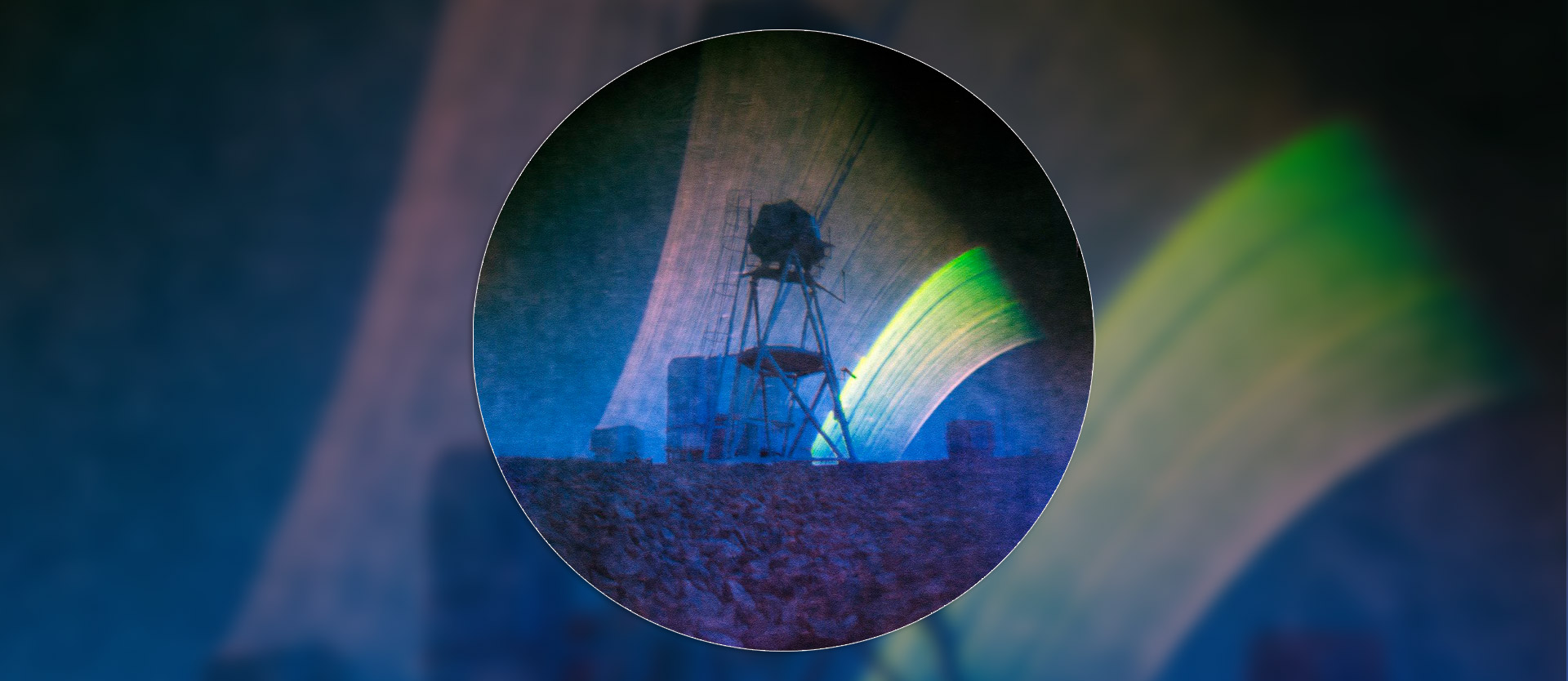
The course of the sun

The tall structure in the foreground is the "seeing monitor," which measures the twinkling of stars due to atmospheric turbulence. The domes in the center left are part of the Very Large Telescope, and the one on the far right belongs to the VLT Survey Telescope.
The bright colored lines were produced by the Sun moving across the sky during the day, leaving a trail on the photographic paper in the pinhole camera. The camera was facing west, so we see hundreds of sunsets here. But as the Earth moves around the Sun, the Sun sets at a different point on the horizon each day. The shortest arc on the far right of the image corresponds to the winter solstice, when the sun reaches its lowest position. From this point on, the sun moves southward day by day, to the left in this image. The arcs become longer and higher. Then, at the summer solstice, the sun reaches its highest point, which is not visible in this image, and draws the longest arc to the left.
The dark lines are due to clouds darkening the sun. Fortunately for astronom:ers, the Paranal Observatory has more than 300 clear days a year, hence the few dark streaks in this image.












